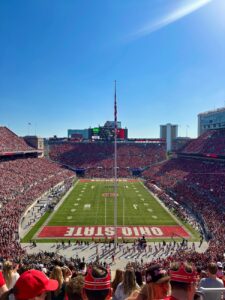The romantic death of Everett Reuss
When, on that fateful day in 1934, the dark mysteries of nature combined against a romantic passing through Southern Utah, the impetus behind those deadly forces alone could have known what a lasting impact a young man’s life and death would make. This life and death were the themes of the Nov. 18 presentation on Everett Reuss given by Noel Carmack, assistant professor of art, and Gary James Bergera, co-author of the book On Desert Trails With Everett Reuss.
This archived article was written by: Seth Richards
When, on that fateful day in 1934, the dark mysteries of nature combined against a romantic passing through Southern Utah, the impetus behind those deadly forces alone could have known what a lasting impact a young man’s life and death would make. This life and death were the themes of the Nov. 18 presentation on Everett Reuss given by Noel Carmack, assistant professor of art, and Gary James Bergera, co-author of the book On Desert Trails With Everett Reuss.
Together these historians painted a verbal picture, to accompany the copies of the block prints made by the wanderer, as displayed in the Gallery East in the USU-Eastern Student Activities Center.
Reuss was the son of a block printer and Unitarian minister. Getting that itch to explore the wilderness, he left his cushioned California surroundings to wander aimlessly throughout the wilderness in Northern Arizona and Southern Utah. A prolific author of letters and other texts, Reuss continually drew the wild Southwest as the ideal retreat for romantics like himself in his written and carved works.
Traveling through the unmapped region-at the time, territory of the Southwest- Reuss and his mules would show up here and there, sometimes disappearing for long enough to incite doubt as to their state of mortality. These travels culminated in the disappearance of Reuss near the Colorado River at the age of 20 in 1934. His mules were discovered in Davis Gulch in the Escalante Canyons with much of his gear, but Reuss was never found.
Included in the most popular theories about his disappearance are: passive suicide, perhaps a purposeful climb up a crumbling wall; murder; an innocent accident; or even the assumption of an alternate identity and a long and productive life as a tradesman in Arizona.
Whatever the cause of his disappearance, Reuss’ face became a symbol of the national wilderness conservative movement. His romantic views of the mysticism and beauty of the country through which he traversed opens the eyes to the wonder and clarity of youthful imagination so often corrupted by the prospect of tainting that piece of the world for personal gain.
Carmack and Bergera, using their own words on top of many written by Reuss, painted a picture of the wilderness and one of the many romantics who lived their brief lives in an effort to become part of it.




